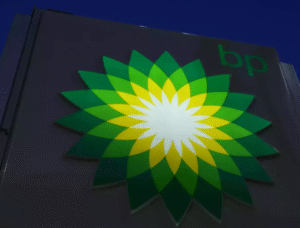$GS $CL_F $USO
#OilPrices #GoldmanSachs #BrentCrude #EnergyMarkets #Commodities #SupplyAndDemand #FuturesTrading #CrudeOil #EnergyInvestment #MarketOutlook #OilSurplus #MacroEconomics
Brent crude oil prices have struggled to maintain upward momentum due to a significant surplus in the global oil supply. According to Goldman Sachs, spare oil production capacity is currently at one of its highest quartiles in history, creating downward pressure on prices. This abundant supply has led to time spreads—typically a measure of market tightness—appearing undervalued since summertime. The bank further noted in a recent research report that expectations for a substantial surplus in 2024 are depressing deferred time spreads, complicating the market dynamics for futures contracts and weighing on short-term sentiment.
Despite this bearish outlook, Goldman Sachs suggests that these factors may be overly discounted in current pricing. The investment bank highlighted that both low inventory levels and the expected oil surplus of 0.37 million barrels per day in 2025 may not justify the apparent oversupply implied in the futures curve. This significant divergence between physical market fundamentals and futures pricing is likely causing inefficiencies in market valuations, impacting speculative investors and hedgers alike. The overshooting of bearish sentiment could mean that the oil futures curve is excessively tilted toward oversupply fears, possibly presenting an opportunity for well-positioned investors.
For energy investors, these developments present a complex, two-sided narrative. On one hand, the high spare capacity suggests a level of market slack, potentially causing Brent crude to remain range-bound in the short term. On the other hand, low inventories could support prices should demand unexpectedly rise or geopolitical disruptions occur. Notably, the bank’s analysis underscores that much of the focus will remain on deferred spreads, as they often serve as a bellwether for market expectations regarding long-term supply and demand balances. Any shifts in macroeconomic indicators or OPEC+ production policies could therefore amplify price volatility, especially in longer-dated futures contracts.
The broader implications of this surplus scenario are multifaceted. For oil-linked ETFs such as the United States Oil Fund ($USO) or energy-heavy indices, the mismatch in futures pricing versus supply and demand fundamentals could add near-term volatility. Additionally, for institutional investors like hedge funds and mutual funds, the undervaluation of time spreads may offer trading opportunities in the derivatives market. That said, key geopolitical risks, including potential production cuts by OPEC+ or unexpected global economic strength, could swiftly alter the equilibrium. In either case, market participants will need to weigh macroeconomic signals alongside supply data to navigate the evolving energy landscape.







Comments are closed.